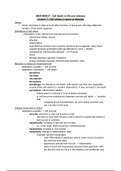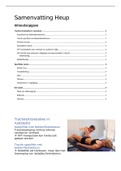College aantekeningen
MED-BMS37 Cell death in life and disease
Detailed notes from the lectures in the master course BMS37 Cell death in life and disease. So instead of rewatching 12 hours of lectures, you can read this, which saves time when preparing for the exam ;)
[Meer zien]





